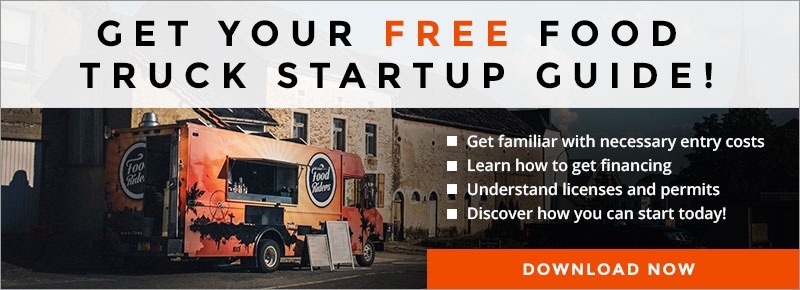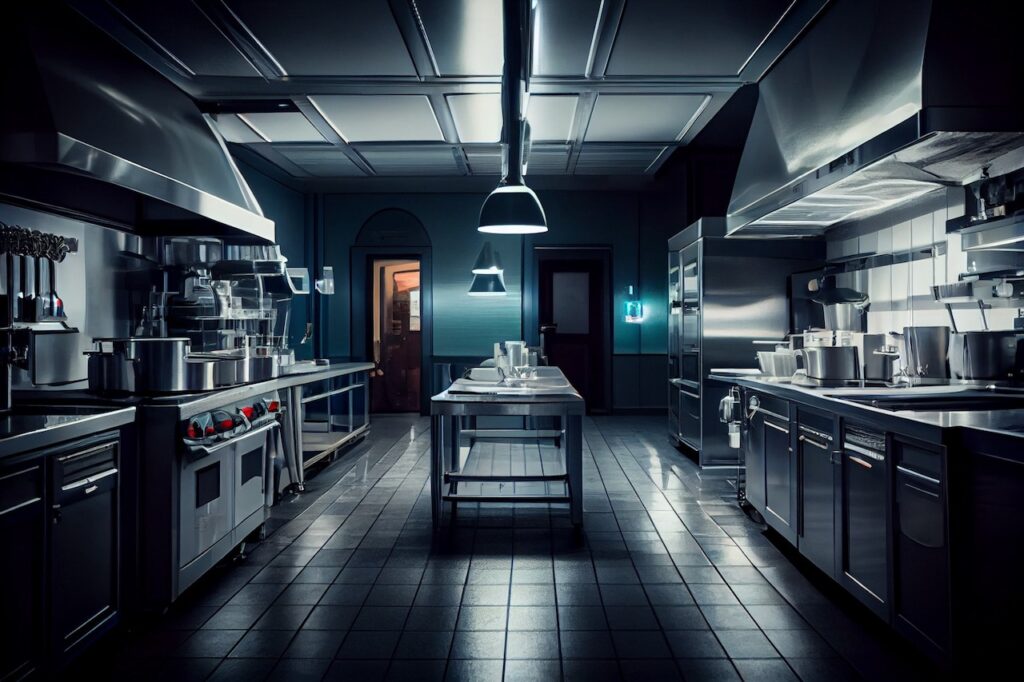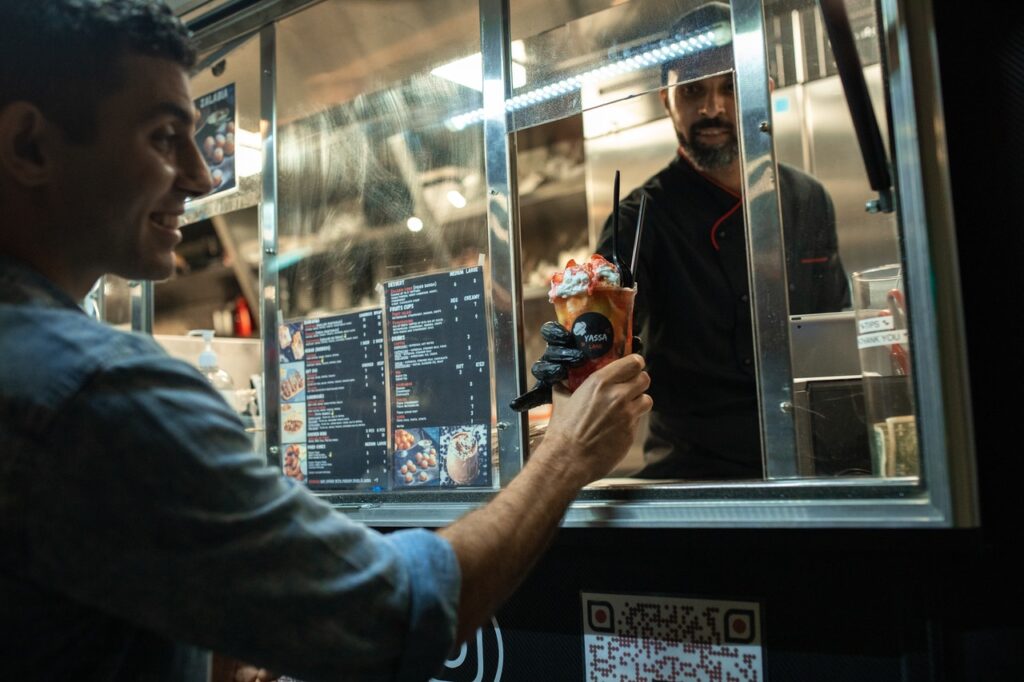What are ghost kitchens? In essence a ghost kitchen is a commercial kitchen that exists solely to prepare and distribute food through a delivery service. A ghost kitchen does not have any seating, nor do they serve customers directly. Instead, a delivery driver picks up the order – usually received from a delivery app like DoorDash – and takes it to the customer.
For food truck owners, ghost kitchens offer a unique business model through which you can save costs while expanding your revenue stream. Read on to learn what ghost kitchens are all about and how to incorporate them into your food truck’s business model.
What Are Ghost Kitchens?
Ghost kitchens, also called virtual restaurants or micro-cloud restaurants, are physical spaces where food prep operators can cook food to sell online. Instead of having a brick-and-mortar location where visitors come to dine at, restaurants that use ghost kitchens run solely on take-out and food delivery, essentially on a model where customers consume food off-premises.
Restaurants that run out of ghost kitchens utilize websites or food-hailing apps like DoorDash and Uber Eats to reach customers, with no visible difference seen when compared to other regular restaurants.
What’s more, there are certain financial benefits thanks to the absence of dine-in activities. Ghost kitchen restaurants are typically located on the outskirts of cities and can prepare food in the same physical space as other restaurants. When you also consider that there is no need for an expensive storefront, you see just how much can be saved on rent and interior decoration.
Ghost Kitchen Models That Food Truck Owners Can Adopt
The online food-hailing industry is expected to hit $500 billion by 2026 and ghost kitchens are definitely riding on this growth. Multiple models have emerged from the effects of COVID-19, but the post-pandemic era sees only a few of these substantially thriving. These “few” are ghost kitchen models that don’t entirely depend on off-premise dining — models your food truck business can easily adopt. These include;
- Running ghost kitchen operations where your online delivery workflows and staff are entirely separated from your dine-in operations. You can close up your dine-in activities when convenient and focus mainly on pick-up and delivery.
- Providing a commercial kitchen space (a ghost kitchen) where other restaurants can rent and prepare food. You can provide this space as a commissary/shared kitchen that helps startups to save on rent expenses, allowing you to make money from that extra food truck or kitchen space you may have.
- Utilizing health and safety-compliant commissary ghost kitchens yourself. With this, you can expand your food preparation operations by hiring extra staff and avoid spending substantially on rent or equipment.
Your Next Step With Ghost Kitchens
To sum it up, ghost kitchens are physical spaces where restaurants prepare food without any associated dine-in activities. For food truck businesses, the ghost kitchen business models are perfect solutions to the challenges around acquiring kitchen equipment and location. You can operate out of fully-equipped ghost kitchens owned by other establishments and, thanks to your online presence, sell your food to anyone no matter where you may be.
If you aren’t sure of where to start, Legion Food Trucks’ experts can guide you on the best ghost kitchen model to adopt for your specific needs. Contact us today for expansion ideas or build your dream food truck with an extra ghost kitchen space in mind.








